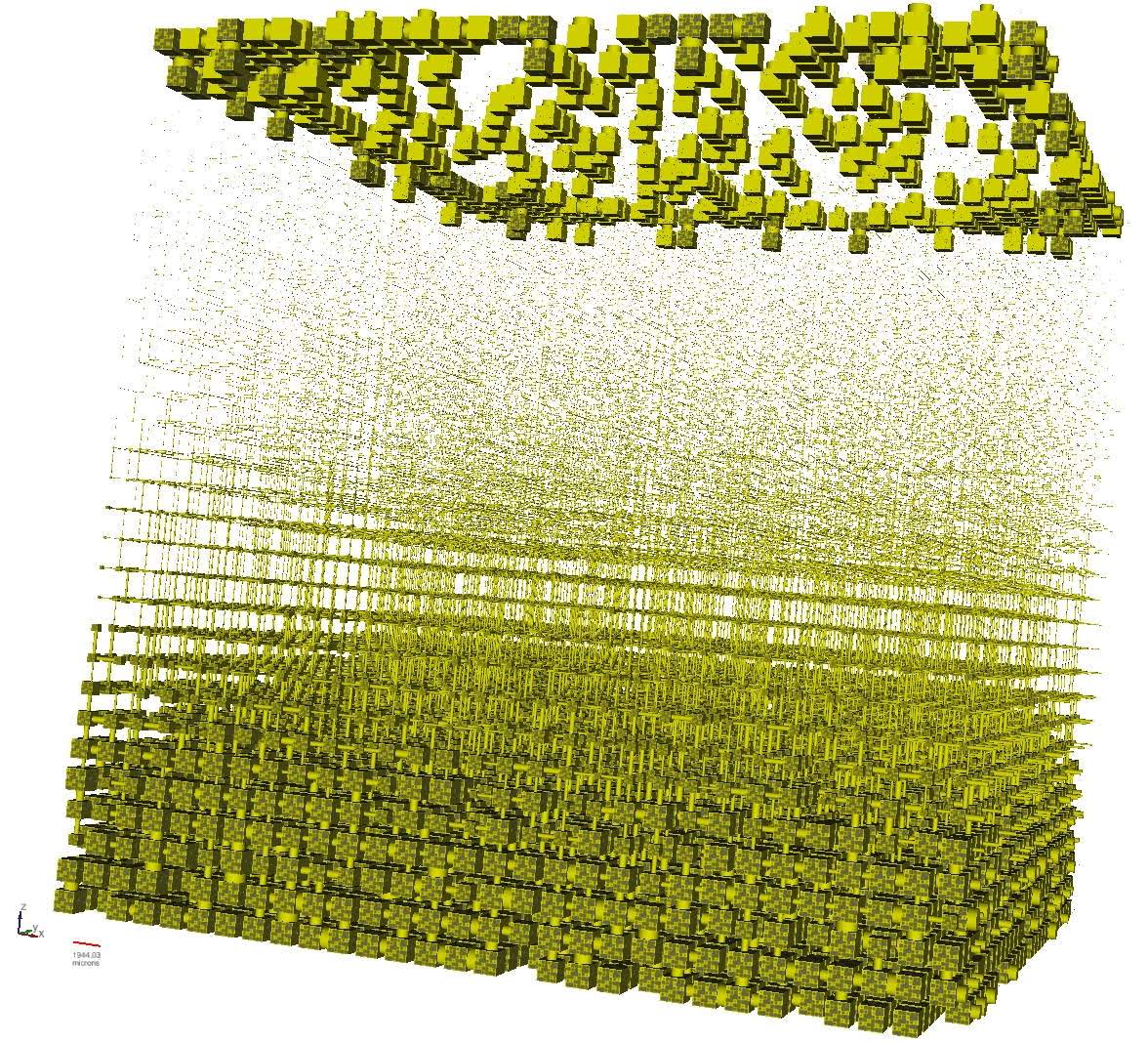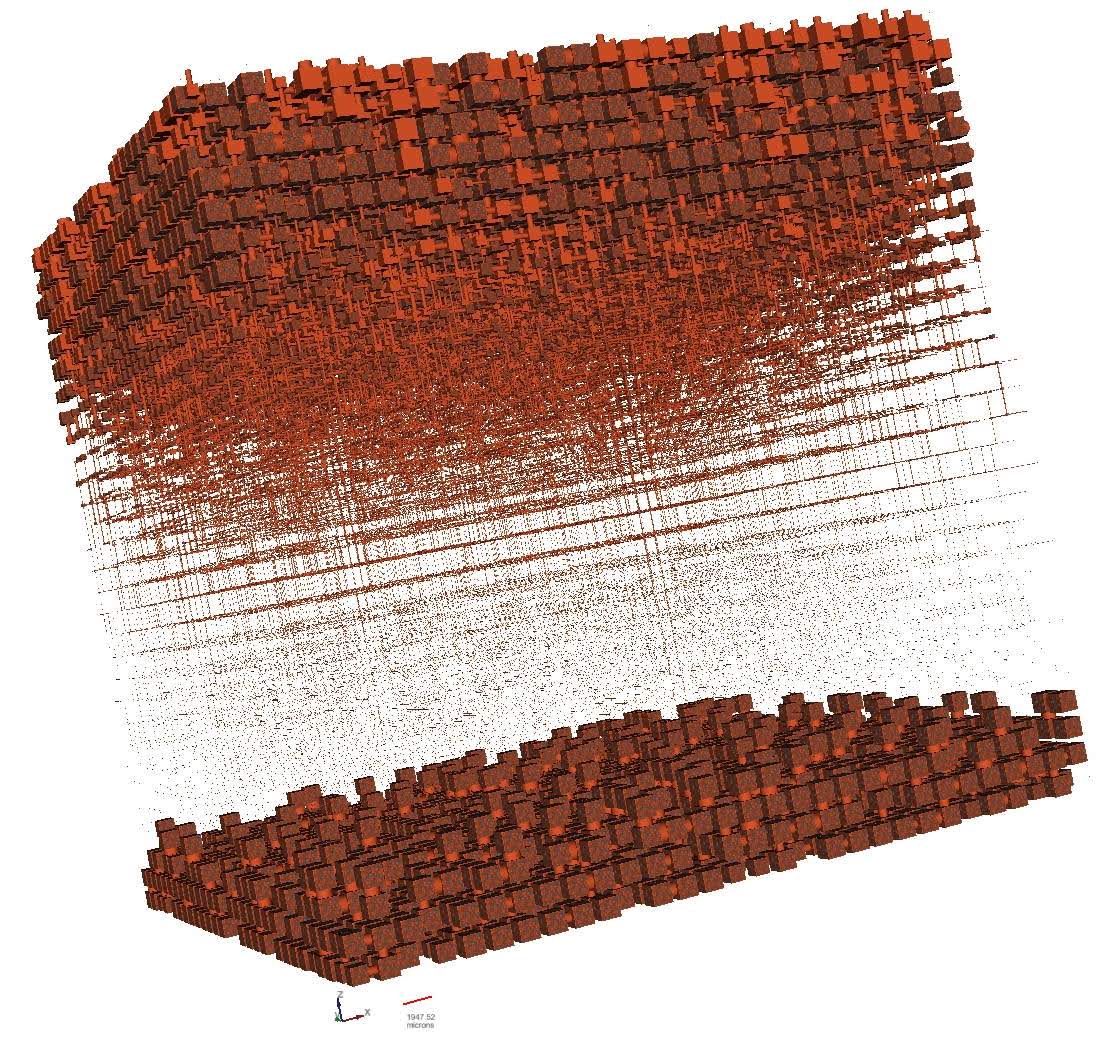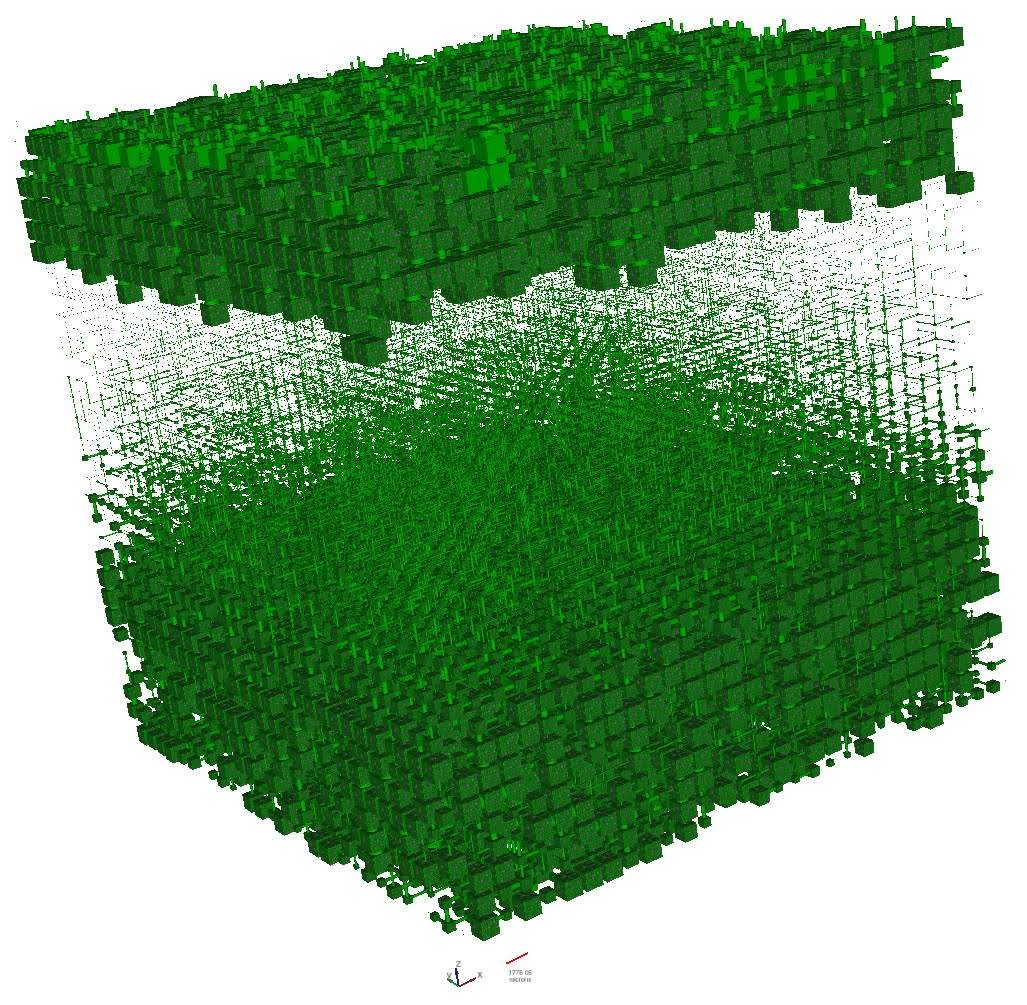There are three types of horizontally banded structures in PoreXpert. These structures can be used to model samples with distinct layers of pore size distribution such as two stainless steel sinters placed together.
Horizontal: small to large
An example of a horizontally banded small to large structure is shown in the next figure. The small throats are at the top of the unit cell and the large throats are at the bottom of the unit cell, remembering the direction of fluid application shown for the vertically banded structure. There is also a layer of large pores on the top surface, required to connect to the replicate of the unit cell in the z direction. This kind of structure is relevant if you are modelling mercury porosimetry samples which have the large pores blocked off using a resin: we refer to this technique as shielded mercury porosimetry.

Horizontal small to large structure, 30x30x30 grid, 8 % porosity, correlation level 0.8, cluster ratio 5.
Horizontal: Large to small

Horizontal large to small structure type, 10% porosity, correlation level 0.7, cluster ratio 3
Horizontal: Large Surface Throats
An example horizontally banded structure with large surface throats is shown in the next figure. This kind of material would be suitable to model two coarse sinters sandwiching a fine sinter in the middle.

Horizontal large surface throats structure, 15 % porosity, correlation level 0.5, cluster ratio 3.